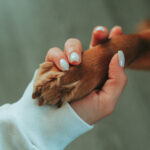Recruitment plays a vital role in the success of any business. Building a strong team of talented individuals is essential for achieving organizational goals. In this blog, we will explore effective strategies and best practices to master the art of recruitment, ensuring you attract and select top-notch candidates who are the right fit for your company.
Understanding Recruitment:
Before diving into the strategies, let’s define recruitment and its significance. Recruitment is the process of sourcing, attracting, screening, and selecting candidates for job vacancies. It involves identifying the right talent and bringing them onboard to contribute to your organization’s growth. However, recruitment comes with its challenges, such as fierce competition for talent and the need to stand out as an employer of choice.
Developing an Effective Recruitment Strategy:
To excel in recruitment, you must start by developing a well-defined recruitment strategy aligned with your business objectives. Begin by setting clear recruitment goals that align with your company’s growth plans. Conduct a thorough job analysis to understand the job requirements and qualifications necessary for success in each role. This will help you create accurate job descriptions and candidate profiles.
In addition, leveraging applicant tracking systems (ATS) and other recruitment technologies can streamline your recruitment process, saving time and effort. Craft an attractive employee value proposition (EVP) to communicate the unique benefits and culture of your organization, helping you stand out in the competitive job market.
Sourcing and Attracting Candidates:
Finding qualified candidates is a critical aspect of recruitment. Explore various sourcing channels such as job boards, social media platforms, and professional networks to expand your candidate pool. Additionally, building a strong internal referral program encourages your existing employees to refer potential candidates from their network.
Engaging with passive candidates is equally important. Networking events and targeted outreach can help you connect with passive talent who may not be actively searching for new opportunities. To optimize your job postings for search engines, incorporate relevant keywords in your job descriptions to improve their visibility in search results.
Effective Screening and Selection Techniques:
Once you have a pool of candidates, it’s crucial to employ effective screening and selection techniques to identify the best fit for your organization. Design and implement a structured interview process that focuses on behavioral-based questions to assess candidates’ skills, experiences, and cultural fit. Pre-employment tests and skills assessments can provide further insights into candidates’ capabilities.
Performing background checks and reference verifications adds an extra layer of due diligence in the selection process. Applicant tracking systems can help streamline and automate the screening process, ensuring a more efficient and organized workflow.
Onboarding and Retention Strategies:
The recruitment process doesn’t end with selecting a candidate; it extends to onboarding and retention. Design a comprehensive onboarding program that welcomes new hires and familiarizes them with your organization’s values, culture, and expectations. Ongoing training and development opportunities enable employees to enhance their skills and grow within the company.
Creating a positive work culture and fostering employee engagement are crucial for retention. Implement effective performance management and recognition programs to motivate and reward employees. Regularly monitor employee satisfaction levels and address any retention challenges promptly.
Evaluating and Improving Recruitment Processes:
To continuously improve your recruitment efforts, establish key performance indicators (KPIs) that align with your recruitment goals. Analyze recruitment data to identify areas for improvement and make data-driven decisions. Seek feedback from applicants to understand their experience and make necessary adjustments to enhance the candidate journey.
Stay updated with industry trends and adapt your recruitment strategies accordingly. As the recruitment landscape evolves, adopting new technologies and innovative practices can give you a competitive edge.
Takeaway
Mastering the art of recruitment requires a strategic approach and a commitment to continuous improvement. By following these strategies and best practices, you can enhance your recruitment efforts, attract top talent, and build a high-performing team. Remember, recruitment is an ongoing process, and staying proactive in adapting to changes will position your organization for long-term success.








